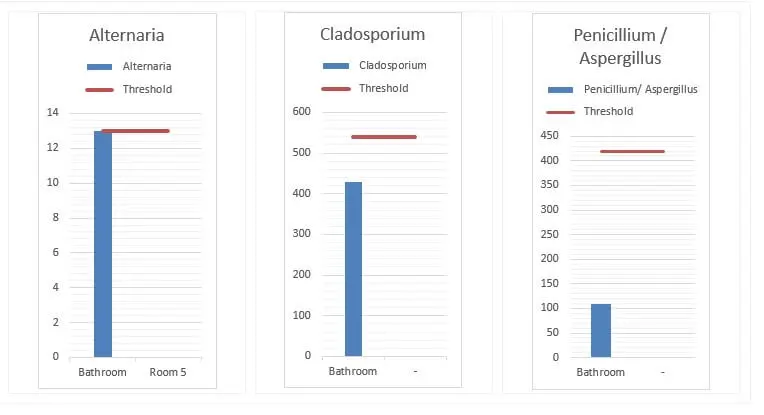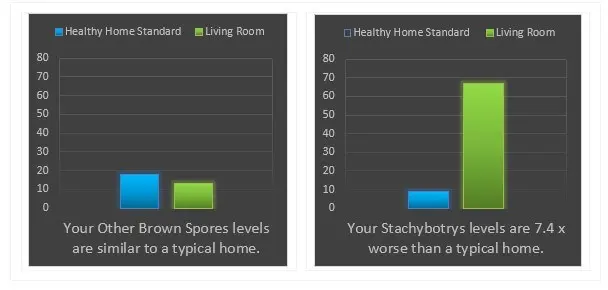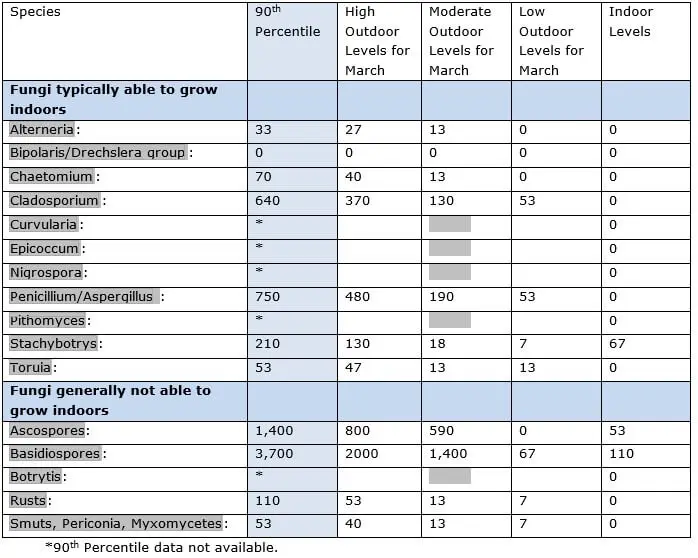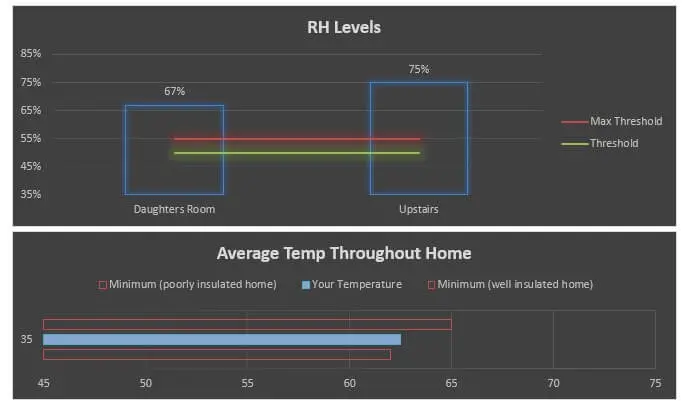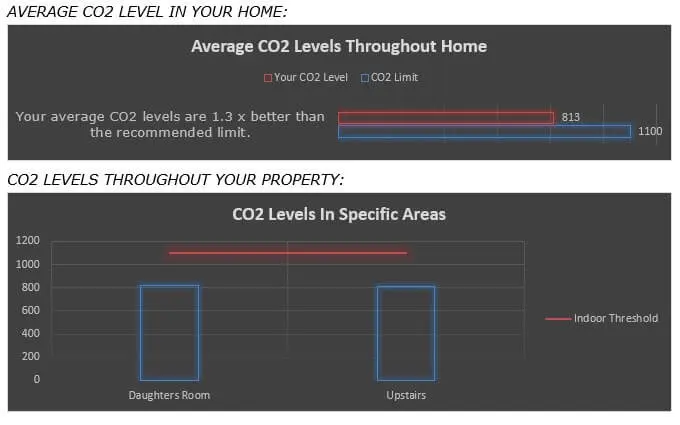Mold Inspection Reports from Oak Harbor
Below are recent mold inspection projects we’ve completed in the Oak Harbor area. These reports can help provide you with an idea of the issues we typically encounter in your region.
Project Type > Mold Inspection for a Bathroom in Oak Harbor
PROJECT SUMMARY
REASON FOR INSPECTION:
- Client manages a property where the tenant found mold growth on the ceiling of his bathroom. Client requested an inspection to determine the source and the air quality risk of the issue.
PROPERTY DESCRIPTION:
- This 2 story residential condominium property is part of a multi family dwelling unit. The home was built in 1983 and is 1,300 ft².
CAUSE OF MOLD:
- Condensation forming on the cold surfaces of the bathroom ceiling.
LABORATORY RESULTS
ANALYSIS OF YOUR RESULTS:
- No Amplification: No mold spores were detected at or near the threshold. The most likely contributor of the elevated mold spores is:
JOBSITE PHOTOS
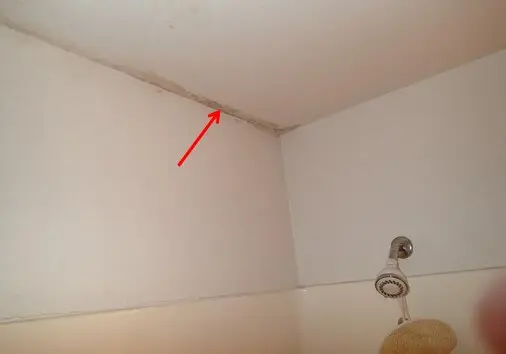
Examples of Light Mold Growth Along Exterior Edge of Bathroom
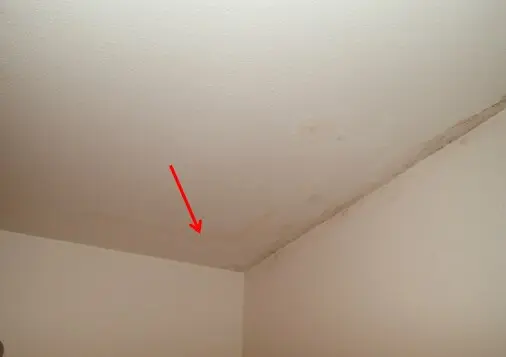
Staining Noted In Upper Corner of Shower Stall
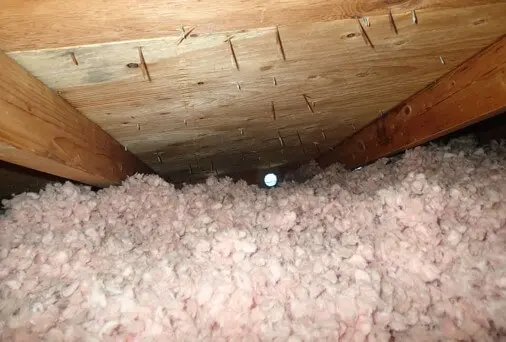
No Evidence of Leak Above Shower – Minimal Insulation Present Due to Soffit Vent And Baffling
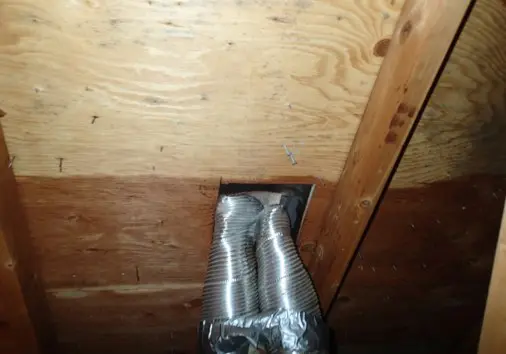
Bathroom Vent(s) Improperly Exiting Attic
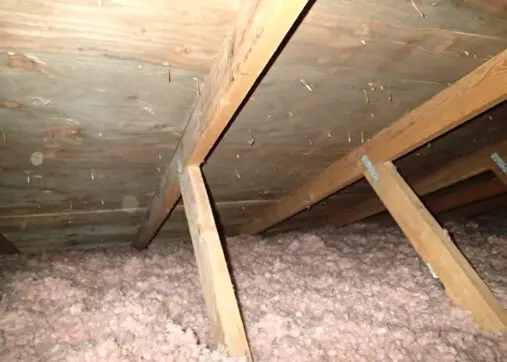
Moderate Mold Growth On Attic Sheathing
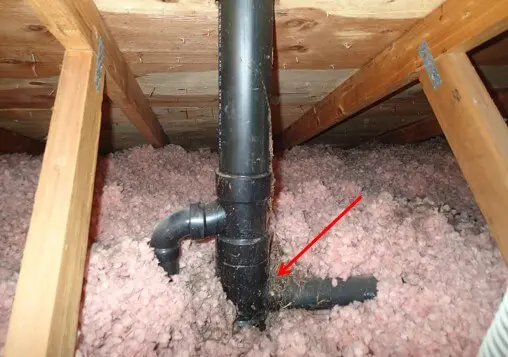
Evidence of Small Leak Around Vent Pipe Boot
LOCATION: Upstairs Bathroom
Observations:
CEILING AND WALLS:
- Light mold growth noted on bathroom ceiling and walls. This occurs when moist air generated by shower usage interacts with the cool surface of the ceiling and walls. Without adequate ventilation, this causes condensation and subsequent mold growth.
SHOWER:
- Grout and caulking is in good condition and shows no signs of recent water intrusion.
Recommendations:
- See ventilation section below for recommendations to eliminate condensation by improving the bathroom exhaust fan.
- Recommend increasing the insulation at the exterior corner of the ceiling and wall joint.
Project Type > Whole House Mold Inspection in Oak Harbor
PROJECT SUMMARY
REASON FOR INSPECTION:
- The tenant is concerned about possible mold issues in the home. The owner would like to know if there is any mold issue in the house causing indoor air quality problems and if so what needs to be done to prevent these issues
PROPERTY DESCRIPTION:
- This single family 2 story rental residence was built in 1973 and is 2,488 ft².
CAUSE OF MOLD:
- The mold in the closet was caused by a leak from many years ago that was repaired. The mold in the attic is caused by warm moist air from the living space leaking through unsealed penetrations into the attic space. When this air comes into contact with the cold attic sheathing in winter months, it condenses allowing mold to grow. Sealing the attic from the living space and increasing ventilation in the both the attic and in the living space of the house is needed to prevent future mold growth.
LABORATORY RESULTS
ANALYSIS OF YOUR RESULTS:
- Minor Amplification: Mold spore levels for stachybotrys came in above average levels for March, but below the 75th This means that though levels were above average, 25% of the days of the month this time of year would show higher stachybotrys levels.
The most likely contributor of the elevated mold spores is:
- Elevated humidity.
- Disturbance of mold spores on wall of closet.
Recommendations:
- Due to the elevated levels of mold spores, the operation of a commercial HEPA air scrubber is highly recommended. This will rapidly lower the indoor mold spore levels. Please contact Environix for pricing.
JOBSITE PHOTOS
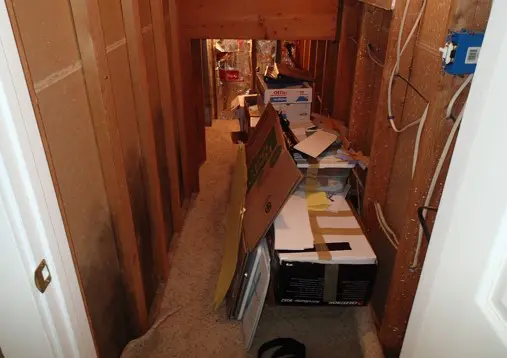
Closet With Mold Issue
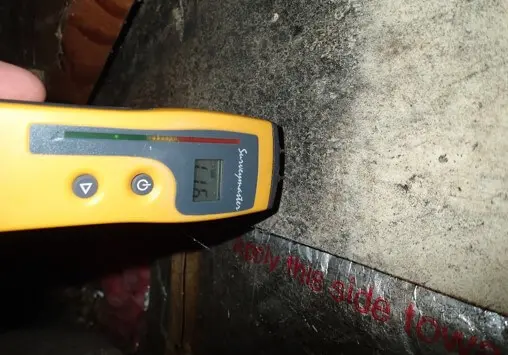
None of the Drywall Showed Elevated Moisture
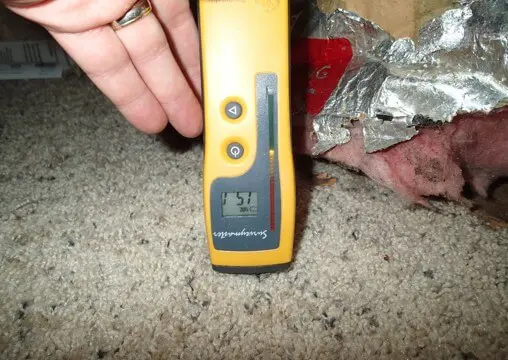
Carpet Did Not Show Elevated Moisture
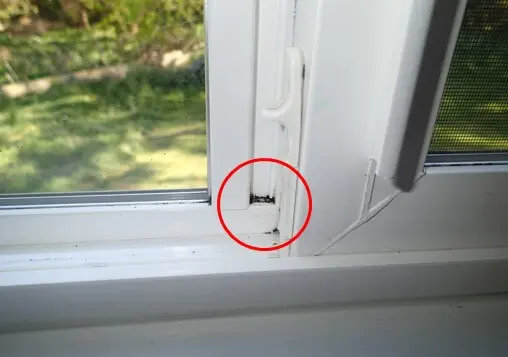
Slight Mold Growth Found on Window
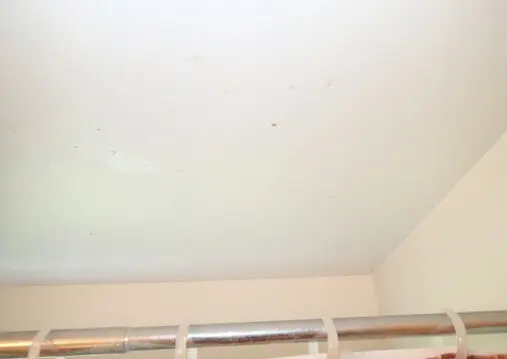
Evidence of Condensation and Mold Growth on Ceiling
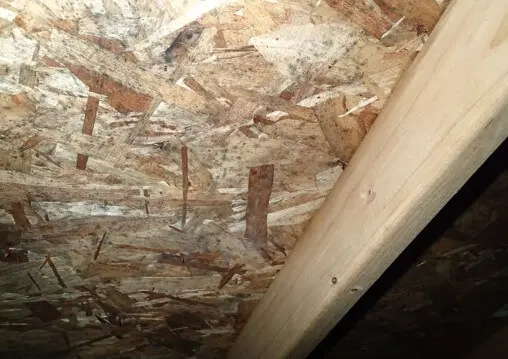
Mold Growth on Sheathing
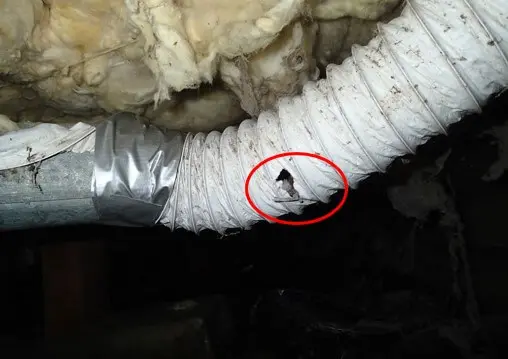
Hole in Older Portion of Ducting
RELATIVE HUMIDITY & TEMPERATURE READINGS:
CO2 READINGS:
LOCATION: Crawlspace
Observations:
- The crawlspace was very messy and had significantly limited access.
- A dryer duct was previously disconnected in the crawlspace. It has since been reconnected, but there is a hole in the ductwork and the connection is not secure.
- Conditions in the crawlspace were overall significantly wet. This does not appear to have led to any significant mold growth at this time.
- Slightly elevated moisture detected in the building materials.
- Vapor barrier missing and damaged in places. Exposed areas of soil in the crawlspace allow significant quantities of water vapor to migrate upward into the home, increasing the relative humidity. Additionally, exposed areas of soil often allow odors to move upward into the home.
- No air sealing noted in subfloor. Air sealing is a technique where the small holes and gaps in the subfloor, such as around plumbing fixtures, are sealed with expanding foam. This greatly reduces the air movement from the crawlspace into the main living area of the home. Not only does this improve the energy efficiency of the home, it significantly reduces the flow of odors and mold spores from the crawlspace into the home.
Recommendations:
- Install a new vapor barrier as needed throughout the crawlspace, ensuring all exposed soil is covered.
- Air seal all major penetrations in subfloor.
- Properly connect the dryer ducting in the crawlspace and repair the area with a hole, or replacing the ducting.
- Consider hiring a drainage contractor to add drainage to the crawlspace to prevent the accumulation of groundwater.
LOCATION: Daughter’s Room
Observations:
- Moderate condensation-based mold growth observed on window and window frame.
- Client notes that previously, some mold was growing between the mattress and a wooden bedframe. This has been cleaned up and no evidence of this was noted during the inspection.
Recommendations:
- Add dust mite covers to the bed and pillows to seal in allergens so they are not inhaled while sleeping. These covers are easier to keep clean than a mattress or pillow.
- See ventilation section for recommendations to eliminate condensation.
LOCATION: Closet
Observations:
- Evidence of heavy mold growth noted on the closet wall.
- The client notes this is the result of a very old water leak, and that they cleaned mold off this wall in the past but left some behind.


